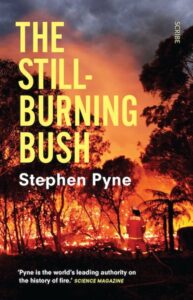 Not so very long ago, while listening to a fascinating podcast discussion about Neanderthals between Melvyn Bragg, Simon Conway Morris, Chris Stringer, and Danielle Schreve from the BBC’s In Our Time program’s archive, I was struck by the use of the phrase “the domestication of fire” by one of the panelists (my apologies for not recalling which one). I hadn’t previously thought about fire as something to be domesticated, but immediately upon hearing the phrase, I thought “well there it is.”
Not so very long ago, while listening to a fascinating podcast discussion about Neanderthals between Melvyn Bragg, Simon Conway Morris, Chris Stringer, and Danielle Schreve from the BBC’s In Our Time program’s archive, I was struck by the use of the phrase “the domestication of fire” by one of the panelists (my apologies for not recalling which one). I hadn’t previously thought about fire as something to be domesticated, but immediately upon hearing the phrase, I thought “well there it is.”
Prof. Stephen Pyne, however, has very likely thought about the idea of fire in this way, and – being quite likely the most prolific researcher and writer on the subject of wildland fire living today – in most all other ways a human being might have thought about it as well. And as it’s been at least three months since his previous book examining the dynamics of fire in a particular geographic region has been published (just kidding, of course; it’s probably closer to four), news had reached me of the 2020 updated edition of his 2006 book The Still-Burning Bush from the Australian publisher Scribe now being available in to interested readers in the US.
Examining “the ecological and social significance of the use of fire to shape the environment through Australian history, beginning with Aboriginal usage,” Prof. Pyne explores how Australia is foremost among all other lands in how fire has both naturally shaped its ecosystems as well as in how it has been used by successive waves of human inhabitants to shape the lands for their own uses.
Those who have already been reading Prof. Pyne’s remarkable To the Last Smoke series will need no further encouragement to seek out this new volume. Those who haven’t are recommended to also seek it out, and then go back to discover more of what they’ve been missing in that aforementioned series as well.
